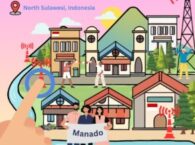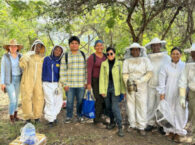Landscape Architecture students create an ecologically-friendly redesign for Ahuska Park
UW-Madison students and professors work with the City of Monona to improve environmental conditions and community interaction within popular public park
Metrics
Community
City of Monona, WI, United StatesCommunity Size
8,045 (2018 Census Estimation)University
University of Wisconsin - MadisonProgram
UniverCity YearYears
2016/2017Status
CompletedCase Type
Project StoriesRegion
EPA Region 5, USAAt 22 Acres, Ahuska Park is the City of Monona’s second largest park. The park is a hotspot for community recreation, both passive and active, from a Sunday farmer’s market to sports like soccer and baseball. However, while the park is known for its recreational opportunities, Monona officials are worried that it is overlooked for its green space and educational opportunities, including the strong connection it has to a surrounding wetland.
For Monona to redesign and redevelop Ahuska Park around its ecological characteristics, the city would need to conduct in-depth landscape research to identify how to best engage its local community with Ahuska’s green spaces.
The UniverCity Year program of the University of Wisconsin-Madison, an EPIC-Network member, was created to help local government and community partners with identified sustainability and livability projects. Participating University faculty incorporate community-identified projects into classes, and provide students with on-the-ground experience in support of a more sustainable and livable future for the partnered community.
During the 2016 to 2017 academic year, the City of Monona was chosen to partner with the UniverCity Year program due to its proximity to the university and for strong support from Mayor Bob Miller.
Landscape Architecture students set out to breathe new life into Ahuska Park
The UniverCity Year program partnered UW-Madison’s Landscape Architecture 365: Planting Design course with the City of Monona to create practical and useful botanical designs for Ahuska Park. At the direction of Professor John Harrington, students performed an extensive ecological site analysis to redesign and rehabilitate Ahuska Park for reasons beyond its recreational opportunities.
To achieve this, students completed the following procedures:
- Conducting site analysis of Ahuska Park to determine opportunities and constraints which might affect the overall design
- Researching precedent studies to evaluate the feasibility of and improve student recommendations
- Undertaking ecological research to identify invasive plants for removal and ecologically-friendly plants, which require little management, for planting
Student site design increases resident engagement, improves natural elements
Students provided numerous recommendations for the redevelopment of Ahuska Park within the final report. The final design was selected to appeal to the largest demographic and had the “greatest potential to offer long-lasting value” to the City of Monona. This site design involved the following improvements:
- Increase opportunities for exploration, exercise, and education by installing a boardwalk to connect surrounding wetlands to the main park
- Manage stormwater by planting a rain garden which would span throughout the park
- Create communal spaces by implementing installing gardens and pathways
- Improve usability of tennis courts by planting a natural windscreen around the
The final redesign presented by students is, above all else, sustainable, involving solutions—pathways, plants, structures—which require little maintenance, ecological preservation, and great communal accessibility. If implemented, the City of Monona will gain recreational and environmental benefits which will improve Ahuska Park and community interactions with it.


